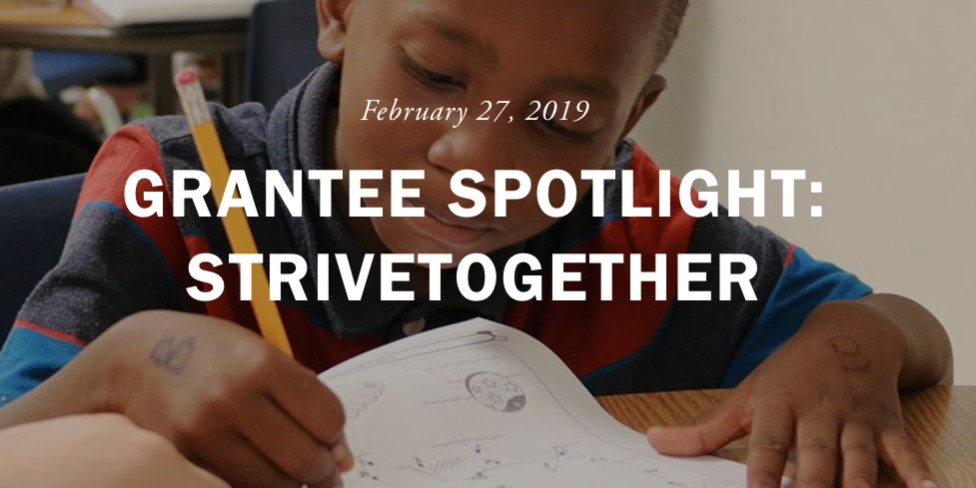This post originally appeared on Ballmer Group’s website.
A data-driven approach to community partnership that supports kids cradle to career
After the first five years of the original StrivePartnership, nine percent more children were ready for kindergarten and college enrollment had jumped 10 percent.

By Jeff Edmondson, Executive Director – Community Mobilization
In 2006, more than 300 local organizations in the Cincinnati and northern Kentucky area came together to improve outcomes for the children in their community. The StrivePartnership included leaders from education, business, nonprofit, and civic communities who set a goal of creating greater equity, especially for children of color. Together they selected milestones and tracked progress against key indicators across life stages. After the first five years, nine percent more children were ready for kindergarten, for example, and college enrollment had jumped 10 percent.
By 2010, the lessons learned translated into a method for building outcome-oriented community partnerships — different sectors coming together to use data to make decisions around measurable results with equity as the overarching north star. Other communities embraced the method and worked to turn it into a framework that became the foundation for a broader national network. Now StriveTogether has engaged nearly 70 community partnerships that reach more than 13 million children. Over half of these children — almost 9 million — are children of color.
At Ballmer Group, we believe communities are the agents of change. Our approach is to support organizations that work to integrate all systems in a community needed to improve results, especially for people of color and families living in poverty. We invested in StriveTogether in 2017 to help them provide more resources to communities they have identified as working particularly well.
These communities coordinate across a host of nonprofits and government agencies that touch a child’s life — education, homelessness, public safety, health. Trying to help a middle schooler achieve better math scores, for example, involves looking into whether she is safe walking to school, or whether she has enough to eat at home. One of the keys to success? Having a local intermediary or backbone organization that does not provide services directly, but instead acts to coordinate the myriad services and systems that are too often working in silos to address pervasive challenges related to economic mobility.
Very specifically, StriveTogether helps communities identify and scale what works by coaching and training the backbone organization on how to convene all the partners around agreed upon outcomes, use data every day to inform action, assess progress, and continuously improve.
These partnerships offer many examples of impact. Graduate Tacoma helped ensure applications for a Washington state scholarship for underrepresented students to study STEM fields rose by more than 70%. In Dallas, the Commit Partnership boosted the enrollment rate for children in public pre-kindergarten from 36% to 43%. In Tennessee, Seeding Success helped decrease chronic absenteeism by 27% across 15 Memphis schools.
The StriveTogether approach enables communities to work collectively and make progress against their hardest challenges. It is not about individual programs — it identifies what works for kids and families and then guides and supports everyone at that local table with the right assets to succeed.





